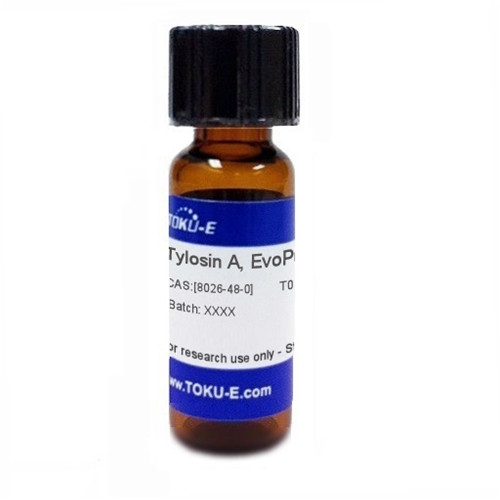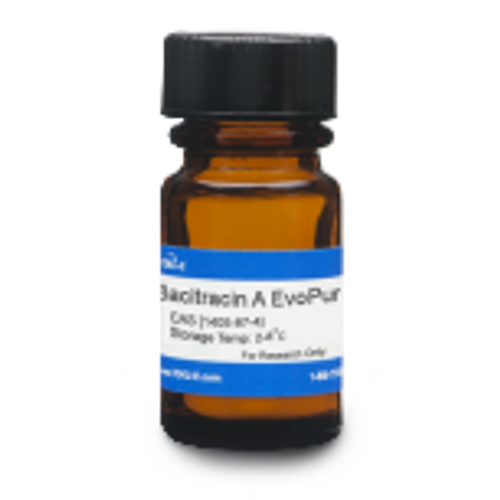Tylosin A, EvoPure®is a highly purified form of Tylosin A. Tylosin is a macrolide antibiotic that was originally isolated from Streptomyces fradiae by the Lilly Research Labs in 1961 from a soil sample collected in Thailand. Tylosin is a mixture of four macrolide antibiotics, the main component of the mixture (> 80%) is Tylosin A. Tylosin B (desmycosin), Tylosin C (macrocin), and Tylosin D (relomycin) may also be present. Tylosin has a broad-spectrum bacteriostatic activity against Gram-positive bacteria and mycoplasma, but much less activity against most Gram-negative bacteria and fungi.
Tylosin A contains a polyketide lactone (tylactone) substituted with three 6-deoxyhexose sugars. The addition of D-mycaminose to the aglycone is followed by concurrent ring oxidation at C-20 and C-23 (to generate the tylonolide moiety) and substitution with L-mycarose and 6-deoxy-Dallose.
Tylosin, like other Macrolide antibiotics, is a bacteriostatic compound that reversibly binds to the 23S rRNA in the 50S (L27 protein) ribosome subunit and inhibits mRNA-directed protein synthesis.
Tylosin has been used to study protein synthesis, abscess prevention in cattle, and Mycoplasma infections.
We also offer:








